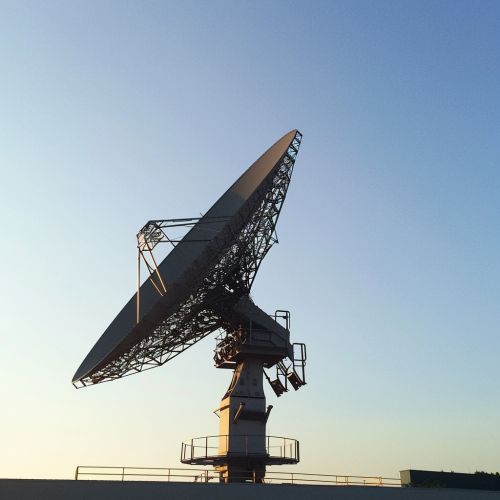Antenna (radio)
Introduction
An antenna is a device used to convert electric power into radio waves, and vice versa. It is an essential component of all radio equipment, being used both for transmission and reception of radio signals. The antenna works by receiving and transmitting electromagnetic waves. This process is a fundamental aspect of modern communication technology.


History
The concept of the antenna was first introduced by James Clerk Maxwell in the 19th century. His theories on electromagnetism laid the groundwork for the development of the radio antenna. Guglielmo Marconi, an Italian inventor, is often credited with the creation of the first practical radio antenna system in the late 19th century.
Design and Function
The design of an antenna is directly related to its function. The size, shape, and type of material used in its construction all play a role in determining its operational characteristics. Antennas can be designed to transmit and receive radio waves at specific frequencies and directions. The design also influences the antenna's bandwidth, gain, directivity, and polarization.
Types of Antennas
There are many different types of antennas, each with its own specific characteristics and uses. Some of the most common types include the dipole antenna, monopole antenna, loop antenna, array antenna, and parabolic antenna. Each of these types has its own unique design and function, making it suitable for different applications.
Dipole Antenna
A dipole is the simplest type of antenna. It consists of two metal rods or wires of equal length, positioned end to end with a small gap in between. The dipole antenna is often used in various forms of radio broadcasting due to its simplicity and effectiveness.
Monopole Antenna
A monopole is a type of antenna that consists of a single rod or wire, typically mounted over some type of ground plane. The monopole antenna is often used in mobile communications, such as cell phones and two-way radios.
Loop Antenna
A loop antenna is a type of antenna that is designed to be small compared to the wavelength of the radio wave it is intended to receive. They are often used in portable devices such as radios and GPS units.
Array Antenna
An array antenna consists of multiple individual antennas working together as a single system. This type of antenna is often used in radar systems and satellite communications.
Parabolic Antenna
A parabolic antenna uses a parabolic reflector, a curved surface with the cross-sectional shape of a parabola, to direct the radio waves. These antennas are widely used in satellite communication and radio astronomy.
Antenna Parameters
There are several key parameters that define the performance of an antenna. These include the antenna's gain, directivity, radiation pattern, polarization, and impedance.
Gain
The gain of an antenna is a measure of its ability to direct input power into radiation in a specified direction. It is typically measured in decibels (dB).
Directivity
Directivity is a measure of how focused the antenna's radiation pattern is in a particular direction. An antenna with high directivity is more efficient at focusing energy in a specific direction.
Radiation Pattern
The radiation pattern of an antenna is a graphical representation of the radiation properties of the antenna as a function of space. This pattern is typically represented in a polar or rectangular plot.
Polarization
Polarization refers to the orientation of the electric field of the radio wave. The polarization of an antenna is determined by the physical structure and orientation of the antenna.
Impedance
Impedance of an antenna refers to the ratio of voltage to current at a given point in the antenna. Matching the impedance of the antenna to the impedance of the transmitter or receiver is crucial for efficient operation.
Applications
Antennas are used in a wide variety of applications, including radio and television broadcasting, mobile communications, radar, satellite communication, and wireless networking. The specific type and design of the antenna used in these applications can vary widely depending on the specific requirements of the application.
